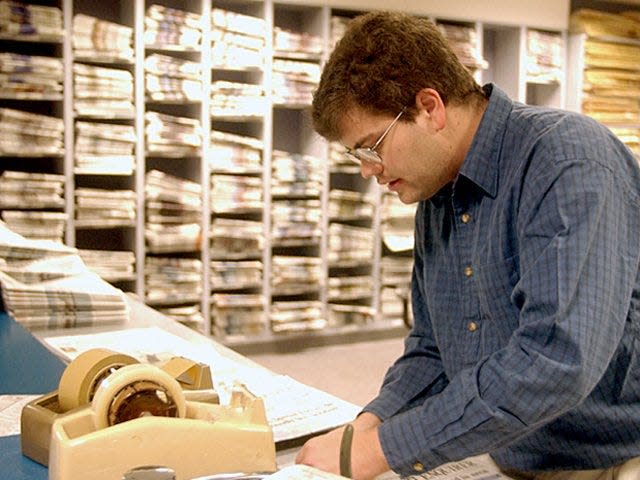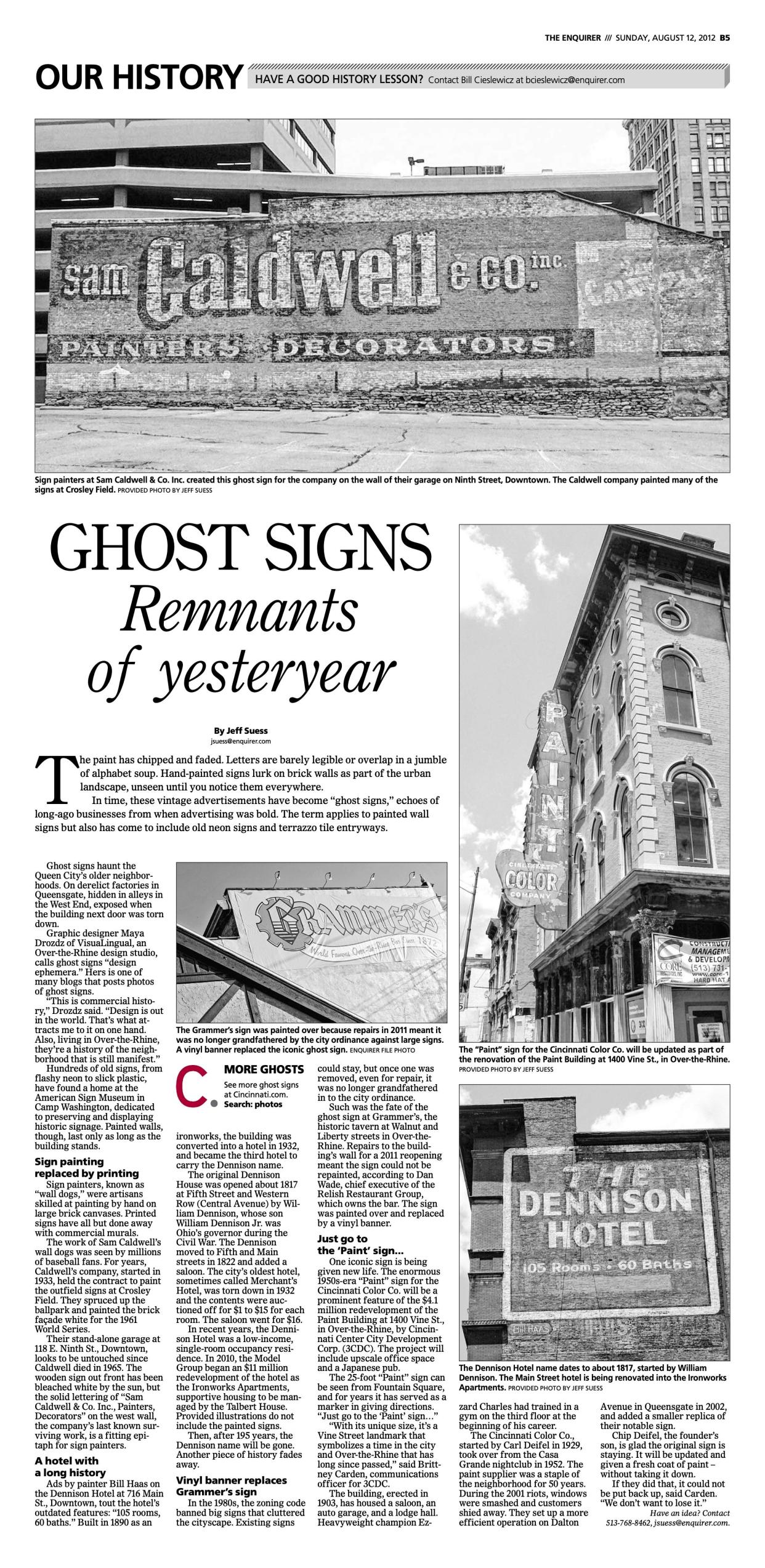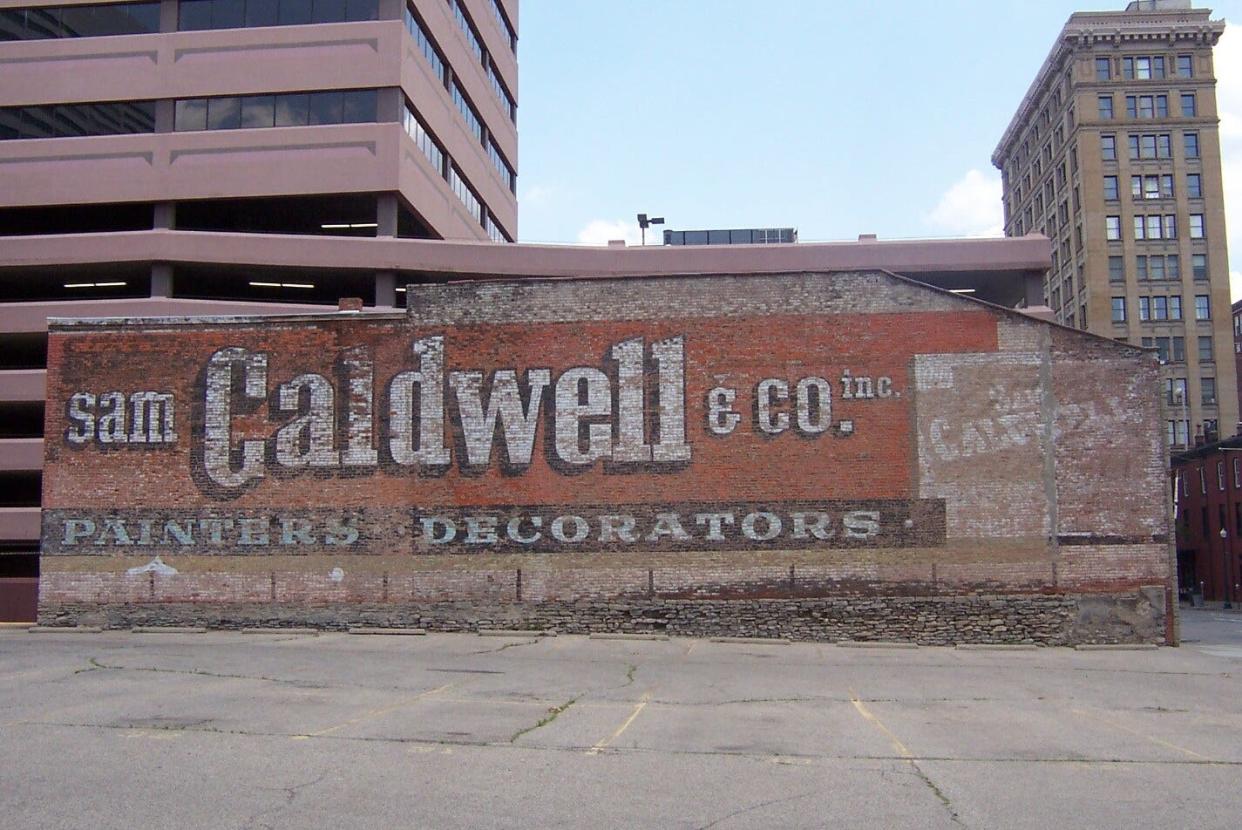Cincinnati has a rich history. Here's how I started covering it and why I'm hooked
One anniversary this week you won’t find on any “Today in History” lists: April 12 marked 25 years for me at The Cincinnati Enquirer.
That, as my white beard reminds me in the mirror every morning, is a quarter of a century. That used to be a long time. Now it’s a blink.
I have been at The Enquirer long enough that stories we covered when I first started in 1999 are now fodder for a history column (see last week’s article on the tornado that struck Blue Ash and Montgomery three days before my first day on the job).
Back then, I was a library clerk and never imagined that I would outlast the library. When The Enquirer moved offices in late 2022, we donated our photo files to the Cincinnati & Hamilton County Public Library. Old clip files have been replaced by digital scans of the microfilm. It’s a paperless archive these days. The job has continued to evolve.

While I kept one foot in the library, for the past 12 years I have also been writing history pieces for The Enquirer. More than 500 articles in total.
That has only been possible because folks like you want to read them.
Our History: Before The Banks there was The Bottoms, a murderous neighborhood with future superstars
Thank you, readers
So, let me take this opportunity to thank you all for reading.
The people of Cincinnati have an insatiable curiosity about their history. More so, it seems, than many other cities. Maybe that’s because we feel Cincinnati is underrated, overlooked by the rest of the nation, and we seek reassurance. To be reminded of all that has transpired in our history.
Or maybe we just miss the old days.
One plus about the history beat is I never run out of topics to write about. History is everything in the past. Sports, politics, war, crime, beautiful stories and ugly tales. From the earliest days of Cincinnati’s settlement to Reds trivia, historic figures and the disappearance of Downtown’s department stores.
In other words, anything that interests me – and readers. Hopefully that’s the same thing.
How I got hooked on history
It was in college that I became hooked on history.
I have to credit one specific history professor, William Newell at Modesto Junior College in my hometown, Modesto, California. His engaging lectures made U.S. history exciting. Not as a series of dates to remember, but as events that shaped the past and present, and the cause and effect of why and how they happened. That view has informed how I approach history more than any other.
When I began working in The Enquirer library, the best part of the job was doing research for reporters and editors, which inevitably led me down the rabbit hole of local history. It seemed everything had some connection to Cincinnati.

In 2012, local editor Bill Cieslewicz asked if I would write a “Did You Know” column. As an aspiring writer, I jumped at the chance.
We had an “Our History” page then, with a featured article each week and “Did You Know” as a secondary entry. Those articles ran about 300 words – with as many facts as I could cram into that space.
My first contribution was a history of the Edward N. Waldvogel Memorial Viaduct, better known as the Sixth Street Viaduct, and its namesake, the late Cincinnati Mayor Waldvogel, who died in office in 1954.
Having no idea how long this assignment would last, I chose topics based on my interests, what I wanted to know more about.
Did you know “Davy Crockett” actor Fess Parker planned to build a frontier-themed amusement park in Northern Kentucky? Or that Cincinnati’s Salmon P. Chase introduced the first national paper currency during the Civil War? Or that he was pictured on the $10,000 bill? (Check your wallet and see for yourself.)
Occasionally they needed someone to fill in on the history feature. I wrote about the nine Carnegie libraries in Cincinnati’s library system (seven of them are still in operation). A travelogue of Charles Dickens’ visit to Cincinnati in 1842. And the history of toys made by Kenner Products – from the Easy-Bake Oven to Play-Doh (did you know it began as a wallpaper cleaner?).
And that was just in 2012.
Most of those early stories are difficult to find now, unless you go to the public library to read the microfilm.
‘Ghost signs’: Revisiting a favorite story
My favorite story from that time was a feature I wrote on ghost signs, those faded, remnant advertisements painted on the sides of buildings.

“Ghost signs: Remnants of yesteryear,” from Aug. 12, 2012, began:
"The paint has chipped and faded. Letters are barely legible or overlap in a jumble of alphabet soup. Hand-painted signs lurk on brick walls as part of the urban landscape, unseen until you notice them everywhere.
"In time, these vintage advertisements have become 'ghost signs,' echoes of long-ago businesses from when advertising was bold. The term applies to painted wall signs but has come to include old neon signs and terrazzo tile entryways.
Ghost signs haunt the Queen City’s older neighborhoods. On derelict factories in Queensgate, hidden in alleys in the West End, exposed when the building next door was torn down."
The inspiration for the article was the Sam Caldwell & Co. sign painted on an old garage building on Ninth Street, across from the main library. A ghost sign for a sign painter.

The company painted the outfield advertisements at Crosley Field and whitewashed the old ballpark for the 1961 World Series.
"Their stand-alone garage at 118 E. Ninth St., Downtown, looks to be untouched since Caldwell died in 1965. The wooden sign out front has been bleached white by the sun, but the solid lettering of 'Sam Caldwell & Co. Inc., Painters, Decorators' on the west wall, the company’s last known surviving work, is a fitting epitaph for sign painters."
I am pleased to see the Sam Caldwell ghost sign is still there a dozen years later. May it never fade away.
Again, thank you for reading. And pardon me while I head down the research rabbit hole for next week’s story.
This article originally appeared on Cincinnati Enquirer: Cincinnati's history is richer than you think. Here's why I'm hooked
